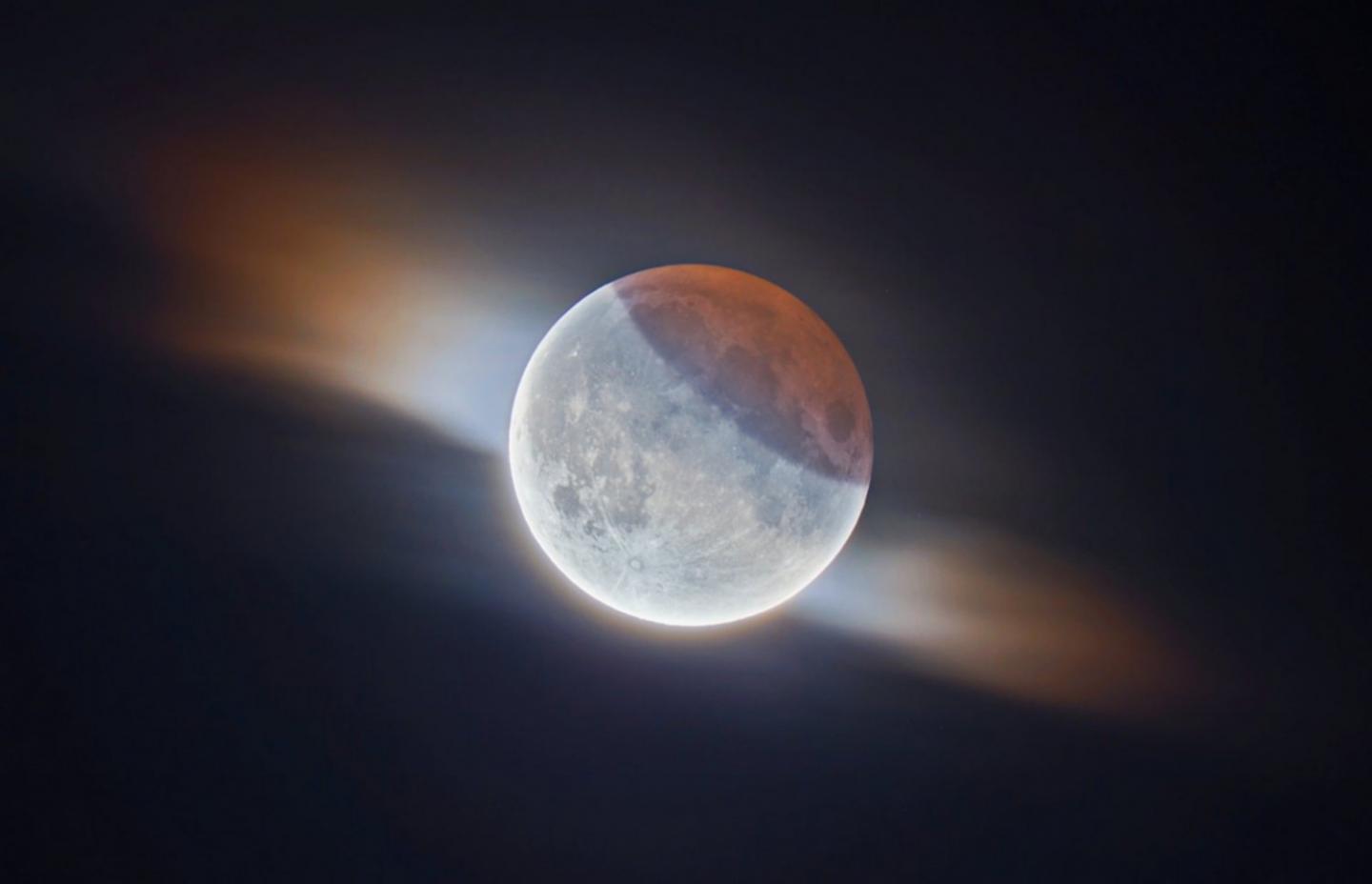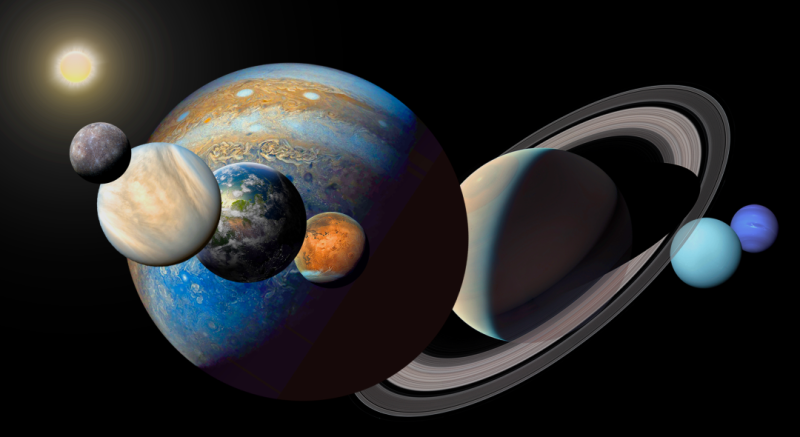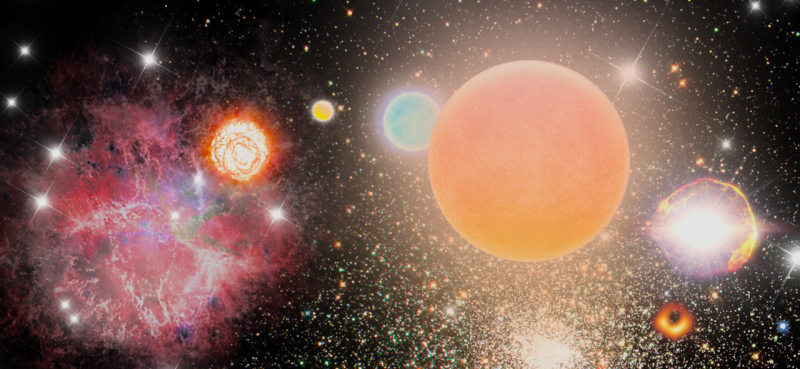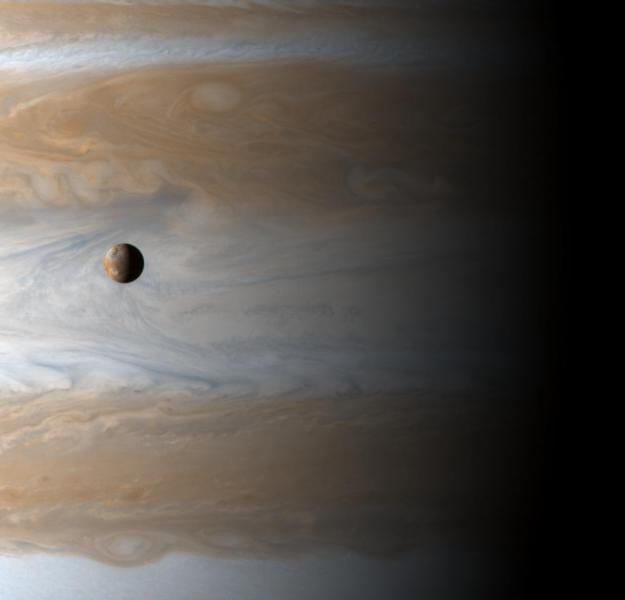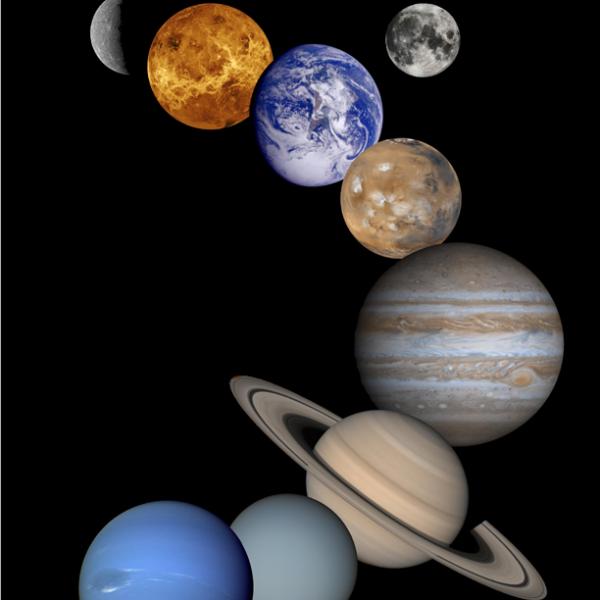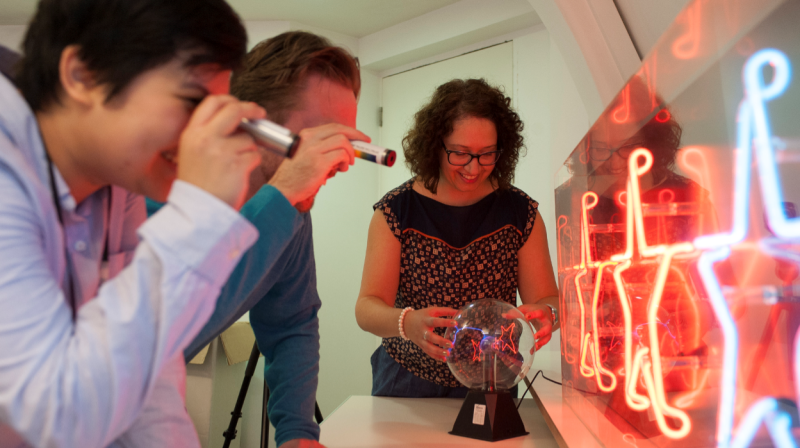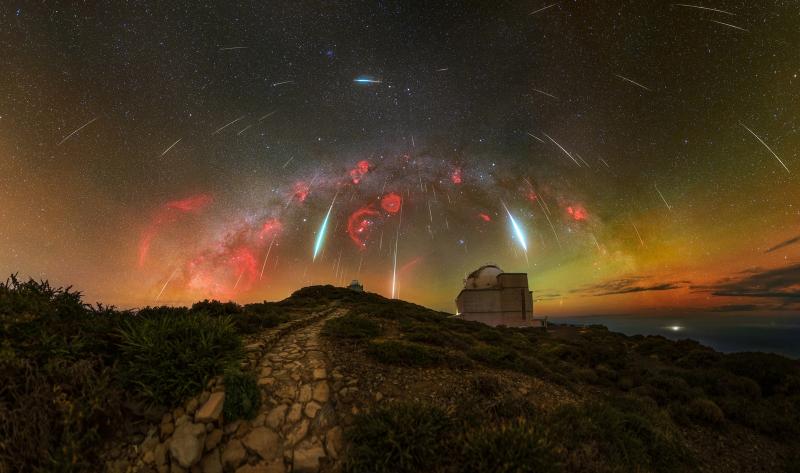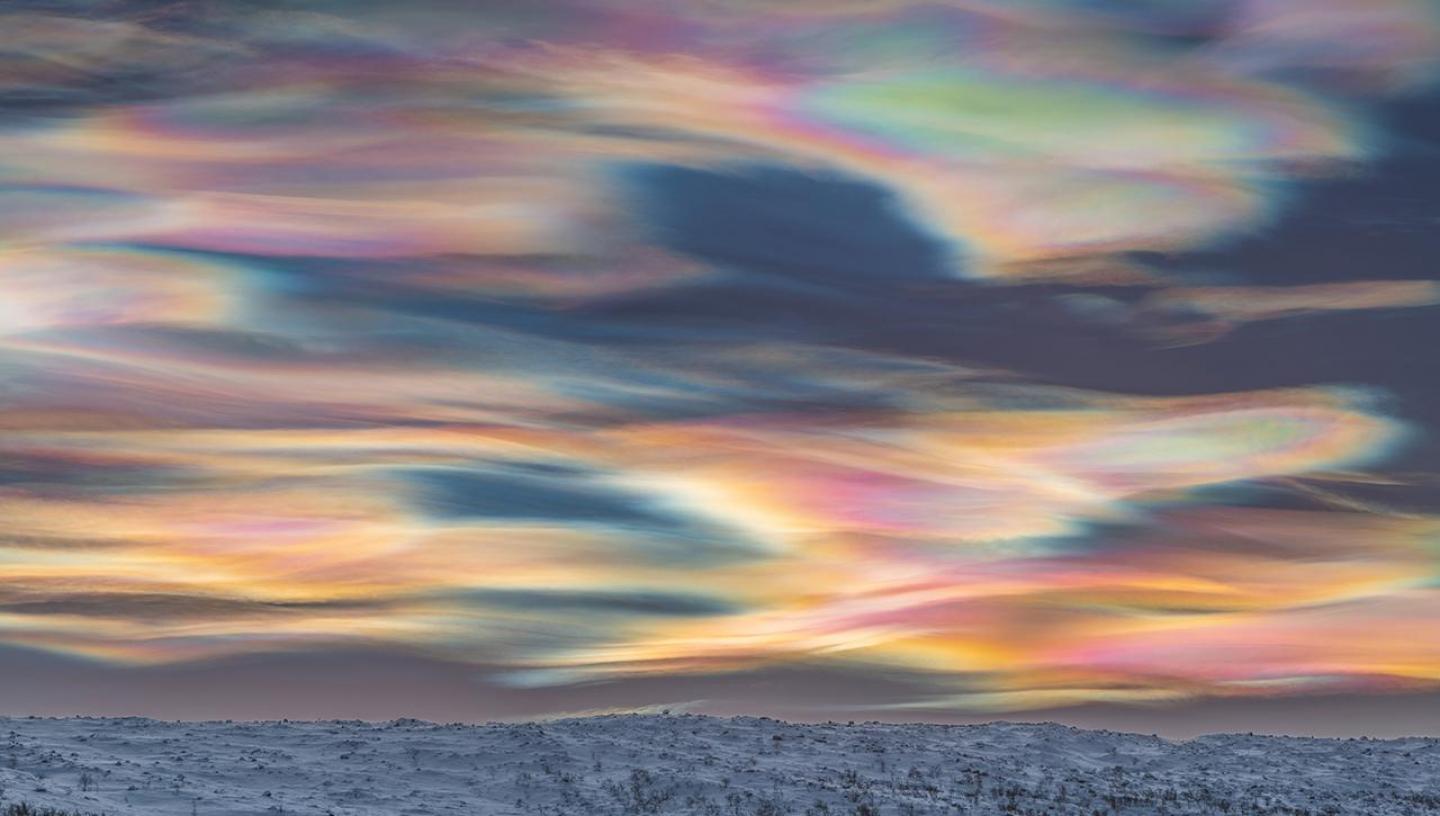
Discover what to see in the night sky in April 2021 including the Lyrids meteor shower and the Spring Triangle.
Top 3 things to see in the night sky in April
- Throughout the month - Spot the Spring Triangle
- 22 April - Keep an eye open because it's the peak of the Lyrids meteor shower
- 27 April - Enjoy this month's full moon which is called the Pink Moon
Look Up! Podcast
Subscribe and listen to the Royal Observatory Greenwich's podcast Look Up! As well as taking you through what to see in the night sky each month, Royal Observatory Greenwich astronomers pick a topic to talk about.
For April, they're talking about the interstellar visitor Oumuamua and new research that suggests it was once part of a Pluto-like world, and they're discussing dust and the Zodiacal light and how data from the Juno spacecraft may have solved a mystery about the source of dust.
Have a listen below, then vote for your favourite story from this episode on our Twitter poll (@ROGAstronomers) during the first week of the month.
Our podcast is available on iTunes and SoundCloud
Astronomy in April 2021: key events and what to see
Details given are for London and may vary for other parts of the UK
Throughout the month – the Spring Triangle
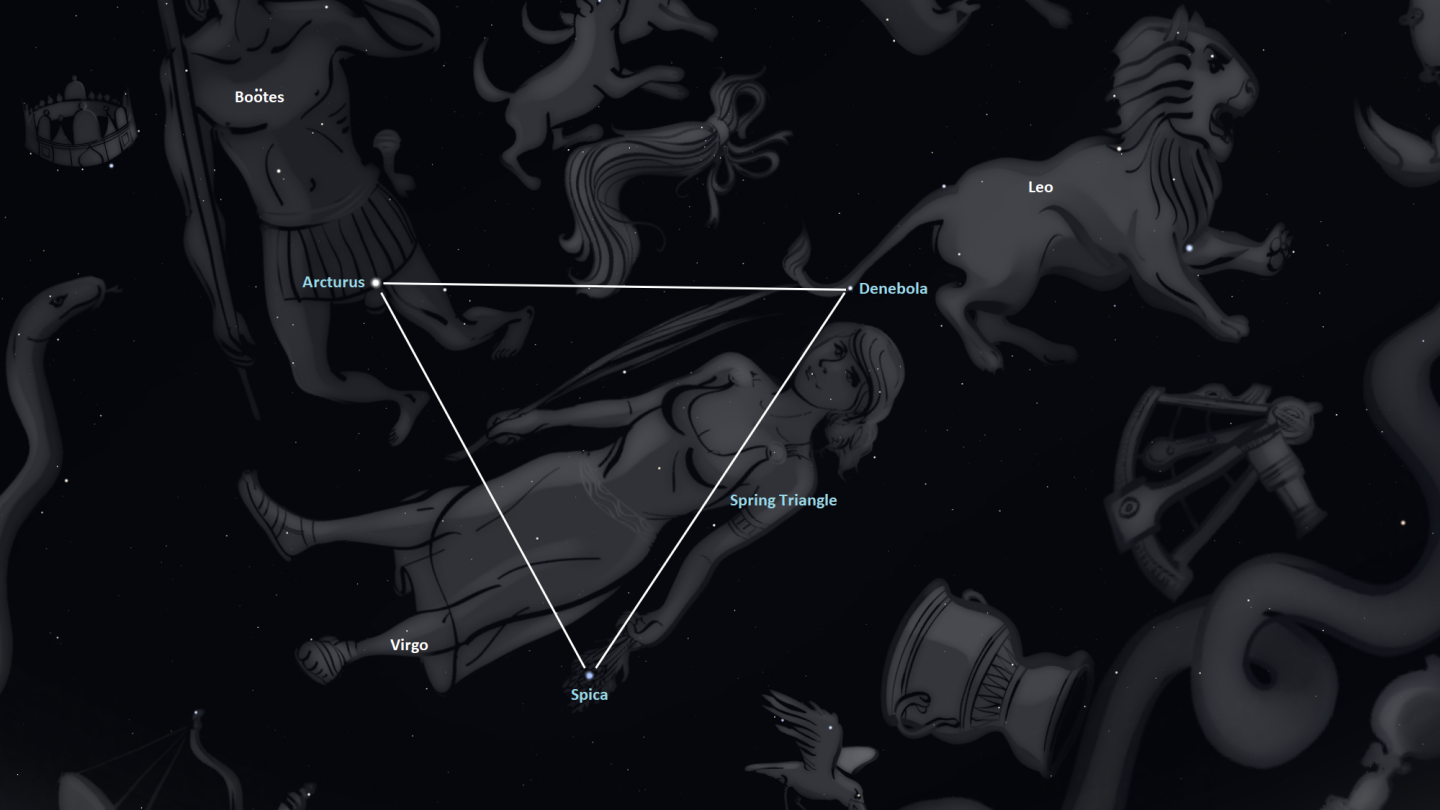
The Spring Triangle asterism is made up of the stars Arcturus, Spica, and Denebola from the constellations of Boötes, Virgo, and Leo respectively. Some people substitute the star Regulus for Denebola as Regulus is brighter, however this means that the triangle is significantly less equilateral, so we prefer Denebola.
Arcturus is the brightest star of the constellation Boötes and the second-brightest star in the sky after Sirius, so is a good one to look for first. It will be 20-30 degrees above the eastern horizon just after the Sun has set. From there, you can look south-east to find the blue star of Spica.
Although Spica is the brightest star of the constellation of Virgo it is significantly dimmer than Arcturus, and being lower on the horizon, you may need to wait until after 10pm to spot this, though the later in the month you look the higher it will be.
Once you’ve got Arcturus and Spica you can turn your attention upwards to find Denebola, which is the tail end of Leo. Denebola is dimmer than the other two stars but is still very visible to the naked eye, but it might be easier to find the constellation of Leo the lion and work backwards.
Leo’s head is made up of a backwards question-mark-shape, which is attached to his vaguely trapezium body. Find the backwards question mark high in the southern part of the sky, and then find the trapezium. The point of the trapezium that is furthest away from the head is the star Denebola, the final vertex of our spring triangle.
22 April – The peak of the Lyrids meteor shower
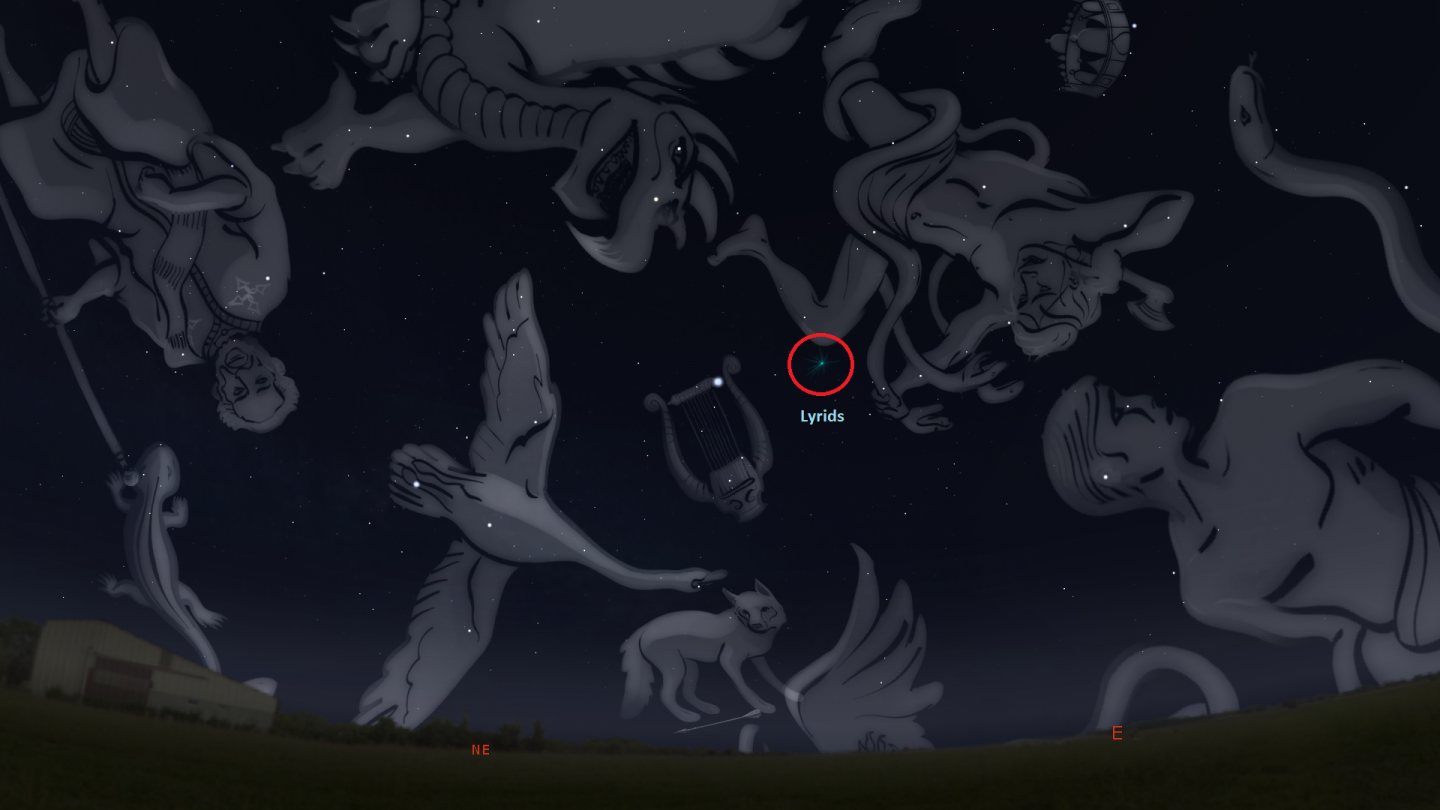
Occurring in mid-to-late April each year, the Lyrids offer the first chance since early January to head outside and watch the Universe’s natural fireworks display.
This year the Lyrids can be expected to peak in the early hours of Thursday 22 April, though don’t expect too much as this does also coincide with a waxing gibbous Moon, meaning the skies will be a little too illuminated to see the faintest meteors. Regardless, if you’re hoping to catch sight of some shooting stars, head outside after midnight and look towards the radiant, which for this meteor shower lies near the constellation of Lyra, in the eastern part of the sky.
Locate the brightest star of the constellation, Vega, and you’ll find the radiant just a few degrees to the south along about the same line of latitude. It’s worth noting that while this is the radiant for the meteor shower, meteors will be appearing to streak away from it and so you’ll probably see more meteors several degrees to the east or west or it rather than right on top of it. So, to maximise your meteor-viewing, make sure you’ve got a relatively clear, unobstructed view of as much of the sky as possible.
Learn more about meteor showers
27 April - The Pink Moon
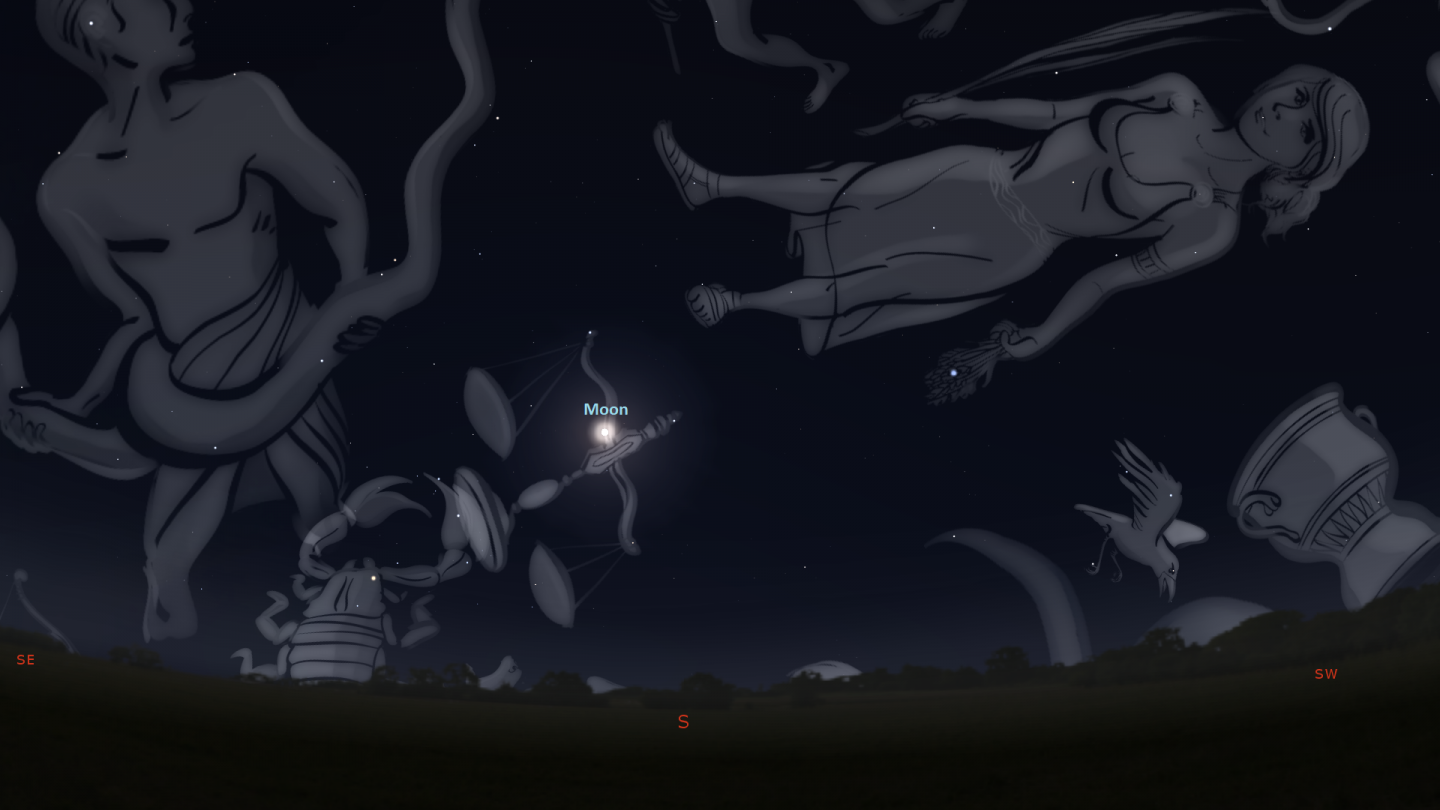
Over time, different cultures have given names to full moons across the lunar calendar. Many of the Moon’s nicknames have come to us from Native American culture because for their way of life, the cycles of the lunar phases were just as important a method of timekeeping as the longer solar cycle of the year (from which the modern Gregorian calendar is derived).
The April full moon is called the Pink Moon and comes from the colours of some wildflowers that start to show themselves in the northern hemisphere in April. Other names for it include the sprouting grass moon and egg moon, reflecting the seasonal changes that start to become apparent as we move into spring proper.
Note that the Moon itself will not change colour, and if it appears so it is simply by chance – heavy pollution or haze can change the colour of the moon.
Southern hemisphere throughout the month – The Crab star cluster
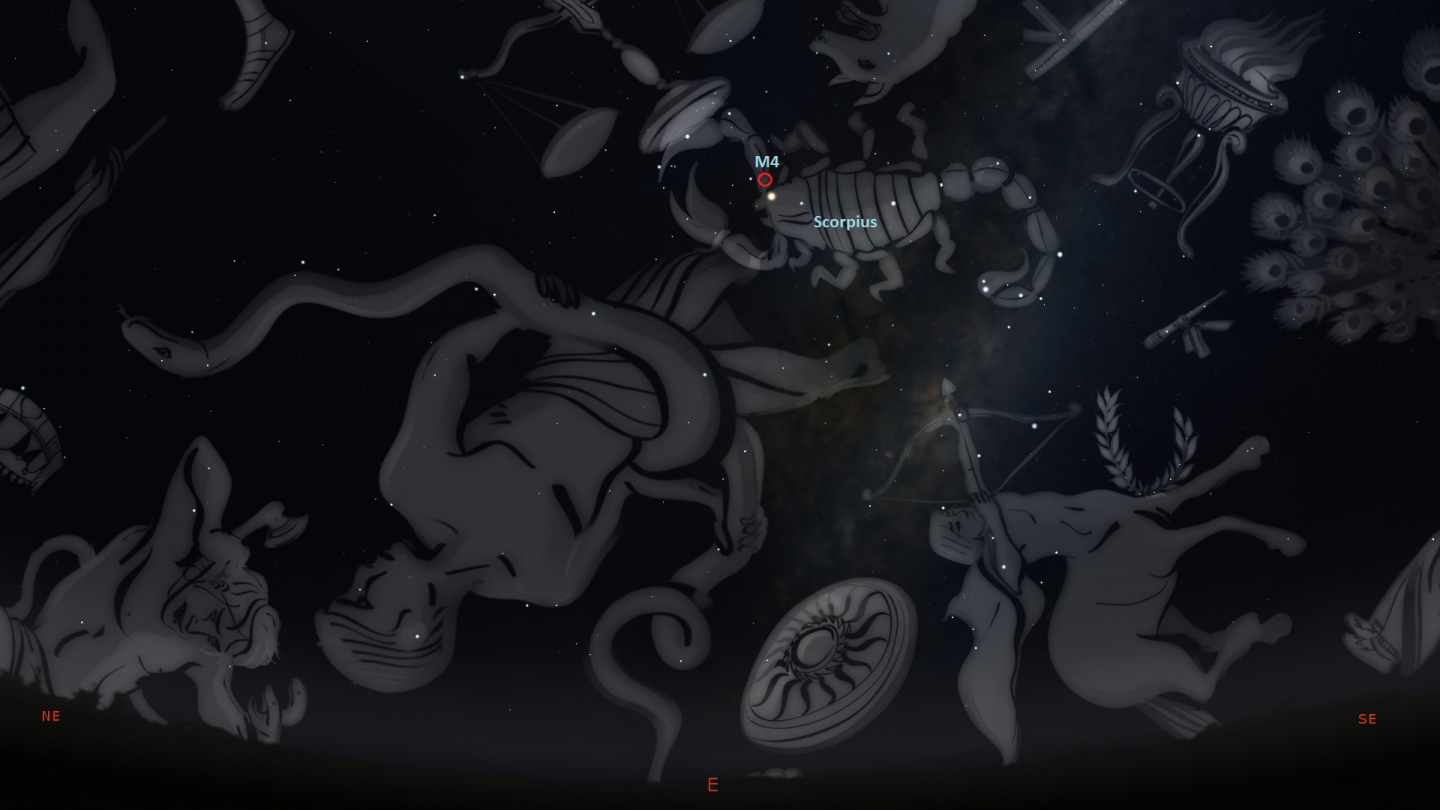
For those living in the Southern Hemisphere, there are some spectacular star clusters that you can see if you’ve got a telescope and, even if you don’t, you may be able to spot some smudges in the sky.
About one degree higher than the bright red star of Antares, part of the tail of the constellation of Scorpius, lies the first globular cluster where the individual stars were properly resolved: M4, sometimes called the Crab cluster.
M4 is relatively large and even with a small scope you should be able to see it as a fuzzy ball of light – a bigger scope, and you may be able to resolve the stars. You can also spot the Spring Triangle though you’ll need to look in the north-east rather than the south; and keep an eye open for Leo the lion which will appear upside down.
Did you know?
While stars and meteor showers can be found in roughly the same place at the same time every year, planets are not so reliable. This is because they are also orbiting around our Sun, but a different rate to us.
We take one year to orbit the Sun, the planets closer to the Sun than us (that’s Mercury and Venus) take less time while planets further away take more time, and so appear to ‘wander’ across the sky. This is in fact where they get their name – when the ancient Greeks observed the sky they noted down ‘fixed’ stars and ‘wandering’ stars.
In ancient Greek ‘planis’ meant ‘to wander’, and so these wandering stars were called ‘planites’, a word that has survived from Ancient to Modern Greek and then, in a slightly varied form, made its way into our lexicon as well.
Learn more about the night sky
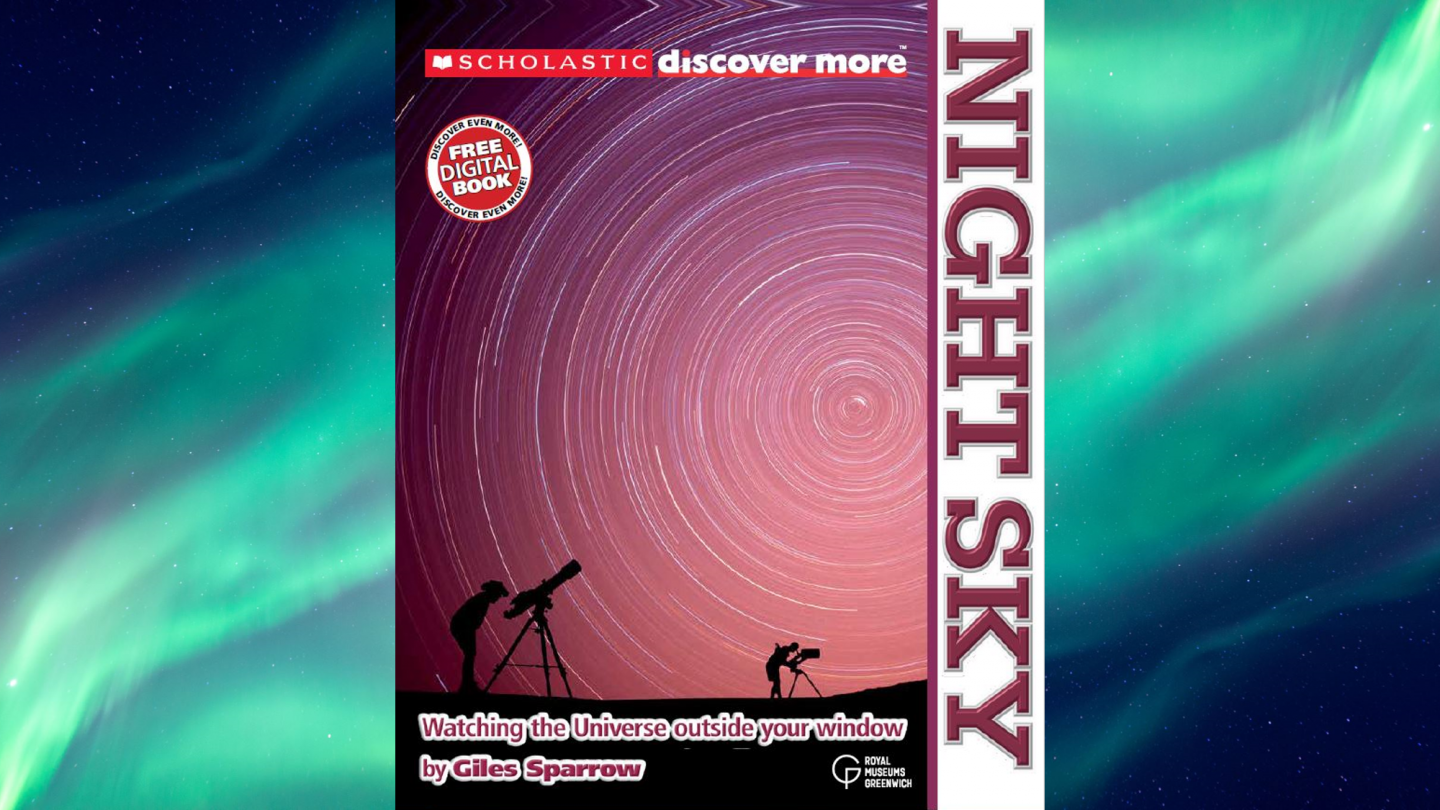
Special offer for secondary schools
Night Sky for Key Stages 4/5 is a spectacular guide to the night sky and an introduction to stargazing for young astronomers.
Discover all the major constellations and their highlights and history. Explore other worlds above your head, from our neighbours the planets to galaxies far from our own. Find out how what you can see from your window reveals the secrets of our incredible Universe.
The Royal Observatory Greenwich are offering copies to secondary schools at a discounted rate of £3 per copy. If this is of interest, please contact publishing@rmg.co.uk for more information.
The Moon’s phases this month
- 4 April: last quarter moon (11:03am)
- 12 April: new moon (03:31am)
- 20 April: first quarter moon (07:59am)
- 27 April: full moon (04:32am)
See the winning pictures from Insight Investment Astronomy Photographer of the Year 2020
Stargazing Tips
- When looking at faint objects such as stars, nebulae, the Milky Way and other galaxies it is important to allow your eyes to adapt to the dark – so that you can achieve better night vision.
- Allow 15 minutes for your eyes to become sensitive in the dark and remember not to look at your mobile phone or any other bright device when stargazing.
- If you're using a star app on your phone, switch on the red night vision mode.
Need a stargazing telescope or binoculars? Check out our range of high quality observing equipment recommended by Royal Observatory Greenwich astronomers.
See our range of observing equipment
Share your pictures
This month's banner image is 'Painting the Sky' taken by Thomas Kast and it is one of the winning images from the Insight Investment Astronomy Photographer of the Year competition 2020.
Would you like the chance to have your image of the night sky used for our banner image? If so, share your photos via our Royal Observatory Astrophotography Facebook group.
You can also connect with us on Twitter: @ROGAstronomers
Subscribe to our YouTube channel and join us on a journey through time and space as we explore our Universe
Online Planetarium Shows and Sessions
Join us for live planetarium shows and sessions presented by the astronomers from the Royal Observatory Greenwich.
Observatory Online
In our Observatory Online video series, posted on our Twitter and YouTube accounts, our astronomers explore different topics in Astronomy and Space Exploration. Each week we’ll also show you what’s up in the night sky for that week, so keep an eye on our Twitter account if you're a keen stargazer.
Resources for teachers and students
The Royal Observatory Greenwich's learning team has also created:
- Free animated videos that answer the biggest questions in astronomy and free resources to go alongside them.
- A whole host of podcasts featuring interviews with real space scientists, astronauts and active researchers working in UK universities.
- A 'learning at home' hub which contains a suite of resources for you to use at home.


